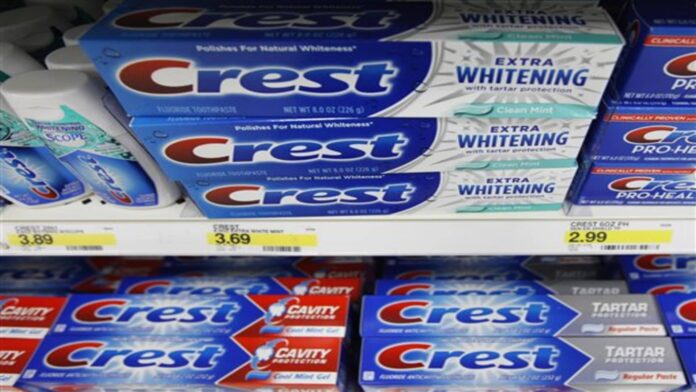Pricing was the saving grace for Procter & Gamble’s fiscal first-quarter performance, but it might not be sufficient in the future. The maker of Tide detergent, Crest toothpaste and Charmin toilet paper beat Wall Street’s profit expectations by 3 cents a share on Wednesday, sending shares nearly 3% in trading, but not all is rosy. It was “a very difficult cost and operating environment,” CEO Jon Moeller said in the company’s earnings release . But bold pricing decisions moved the needle for P & G. In the quarter ended Sept. 30, higher pricing (up 9%) basically offset two significant headwinds to revenue: lower volumes (down 3%) and the strong dollar (down 6%). Still, even with that significant jump in prices, its gross margin fell 1.6 percentage points compared with a year ago thanks to higher commodity, input and freight costs. The price hikes were enough to bring P & G’s gross margin of 47.4% above StreetAccount estimates of 46.7%, despite the year-over-year decline. P & G’s pricing levels are covering most of the company’s cost pressures, but these actions don’t seem large enough to cover an increasingly difficult currency problem over the next several months. The value of the U.S. dollar against a basket of six currencies, including the yen, sterling and euro marked a multi-decade high at the end of September. Companies have spent months trying to come up with pricing strategies to combat inflation, but now management teams may need to reevaluate how they thwart the higher dollar, too. Let’s take a deeper dive into P & G foreign exchange problem to better illustrate what’s going on. Currency reduced P & G’s first-quarter revenue by 6%. That headwind has significantly escalated in recent months. It was a 3 percentage point headwind six months ago in P & G’s third quarter and a 4 percentage point headwind in the fourth. More importantly, the currency headwind is going to pose a significant problem for the company’s current fiscal year – which still has three quarters remaining. P & G is yet another company that is indicating that analyst estimates are too high. It joins the bucket of companies that have beaten in the latest quarter but have given cautious guidance. ( Lockheed Martin and Johnson & Johnson are two examples from Tuesday’s round of reports.) P & G cut its fiscal year revenue forecast. It is now calling for a decline of 1% to 3% versus prior expectations of flat to up 2%. The main reason for that reduction is the currency headwind expectation of 6%, which has doubled from the projection of 3% just three months ago. That’s a 3 percentage point difference – matching the magnitude of the revenue cut. P & G also said that fiscal year earnings will likely come in at the low end of the previously issued range. There was no mention about additional price hikes in the release. The currency issue has basically created another headache for global companies like P & G. A big question will be whether P & G will evaluate further price hikes to mitigate the strong dollar’s impact on financial performance. If it does, it will risk threatening demand.
© heardonwallstreet.com


